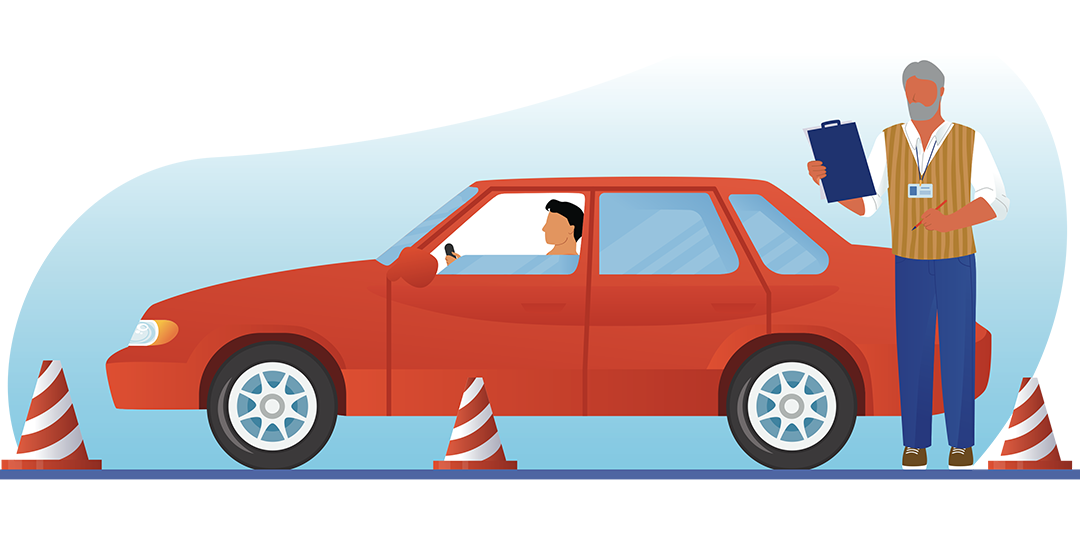The Future of Driver Education
Driver education has evolved to accommodate new content and teaching practices based on available research and vehicle technology
By Daniel R. Mayhew and Robyn D. Robertson, on behalf of the Association of National Stakeholders in Traffic Safety Education (ANSTSE)
Driver education has addressed emerging road safety issues in the past
Driver education strategies date to the early 1930s and have traditionally been used to teach teens how to operate a motor vehicle safely and to obey the rules of the road. Driver education training includes classroom and behind-the-wheel components and an introduction to safe driving habits. Driver education provides a safe and controlled environment for teens to develop their driving skills and helps prepare them to pass the state driver’s license tests. To remain current, driver education has evolved to accommodate new content and teaching practices based on available research and vehicle technology.
Driver education also informs teens and their parents about graduated driver licensing (GDL) programs in each jurisdiction which are implemented by state driver licensing agencies as well as teaches teens why it is so important to obey GDL and other driver licensing requirements. For example, research has shown distracted driving and hazard awareness are important crash risk factors for teens. Driver education teaches teens about the risks posed by distractions and hazards and provides them with the knowledge and skills to avoid distractions and, identify and respond to hazards on the road.
Driver education has the capacity to address emerging road safety issues now and, in the future
An important role for driver education is to teach teens about the safety benefits and risks associated with new vehicle technology. Driver education can help young and novice drivers understand the importance of adopting safe driving habits to help maximize the benefits of emerging vehicle safety features. Like any technology, safety features have limits and may fail under certain conditions. Hence, driver education can teach new drivers to understand the responsibility of driving and the driver’s role in the safety equation. It can also ensure young drivers are aware of the limits of these vehicle technologies so they do not become over-reliant on them in conditions where they may not work well.
Driver educators can continue to work with state driver licensing agencies to ensure teen and novice drivers are better informed about new laws and regulations related to new vehicle safety features as they enter the marketplace.
Driver education is a critical need as automated vehicles become available
Despite rapid advances in vehicle technologies, and the move towards semi-autonomous vehicles or Advanced Driver Assistance Systems (ADAS), it is essential drivers remain engaged in the driving task. Semi-automated vehicles are anticipated to change the way drivers interact with their vehicles so driving skills will remain a critical need. Drivers must still learn and retain basic operating skills, even if they do not have to drive every day. Driver educators must be prepared to address these new challenges, and continuous driver education may become essential for all drivers, as opposed to just new drivers.
The rapidly evolving nature of this technology highlights that delivering driver education to novice teen drivers will no longer be adequate to respond to changes in technology in vehicles as well as hazards in the road environment. Driver education must adapt to the needs of drivers and state driver licensing agencies to support the development and maintenance of safe driving skills as a lifelong process. Driver educators are up to the challenge so the future for driver education as an important and effective road safety initiative is promising.
Resources are available to help driver education address the challenges of new vehicle technology
Driver educators can access current information about the latest safety features available for vehicles and help novice drivers adapt to the changing road environment with user-friendly online resources:
- Brain on Board contains a variety of fact-sheets, posters and public service announcements that describe the functionality of passive and active safety features, and the role of driver behavior in maximizing the use of these technologies. Materials can be used in a classroom setting.
- My Car Does What contains comprehensive information about a wide range of safety features.
- Consumer Reports provide more in-depth reviews and include details for specific makes and models.
Driver education will survive the challenges of the COVID-19 pandemic
In most states, educational institutions have been closed in response to the COVID-19 pandemic, underscoring the static approach to delivering driver education is no longer adequate. Driver education is no exception as the government response to COVID-19 has had major and varied impacts on public and private driver education schools regarding the conduct of physical classroom and behind-the-wheel training.
Driver education is working with local and state agencies, teens, and their parents to reduce contact and save lives by closing or taking precautionary measures, such as the use of online, virtual classrooms and distance learning platforms. Driver education will recover from the challenges of the COVID-19 interruption and continue to teach teens how to drive safely as vehicle technology and the road environment evolve in the future.
Acknowledgments
The authors greatly appreciate the assistance of members of the Association of National Stakeholders in Traffic Safety Education (ANSTSE) for reviewing drafts of this paper and providing insightful comments. Thanks as well to the ANSTSE Secretariat for managing the review process and providing input on the scope and content of the paper. We also acknowledge the National Highway Traffic Safety Administration (NHTSA) for their financial support.

